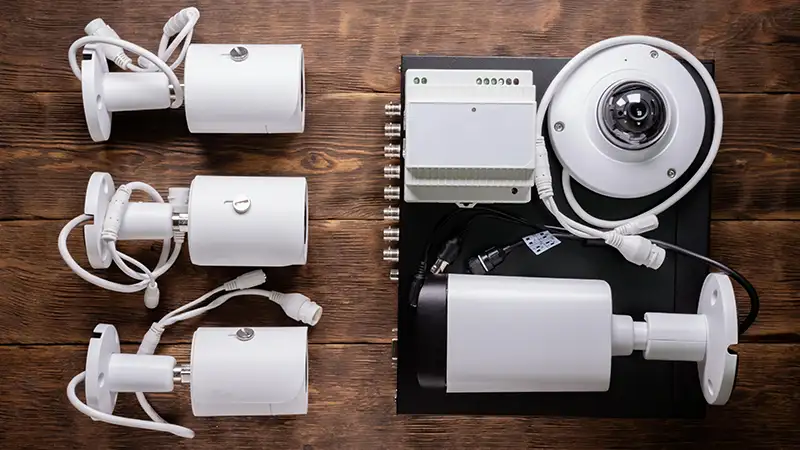
- May 14 2025
- |
- Reading Time: 4 Min
Cloud Based Digital Signage vs. On-Prem: Here’s What You Need to Know
Reading Time: 4 minutesChoosing a content management system (CMS) for your digital signage might seem like a simple decision until you discover just how many options are available. One of the first big choices you’ll face is whether to use a cloud based digital signage CMS or an on-premises (or “on-prem”) CMS.
This decision will influence:
-
- Your upfront and long-term costs
- How easy it is to update and manage content
- How well your system scales as your business grows
- How much IT support you’ll need
- And even how your data is stored and protected
For many business owners, IT managers, and marketing teams, choosing can feel overwhelming, especially when trying to balance cost, flexibility, and security.
In this article, we’ll explain the key differences between cloud based digital signage and on-prem CMS options, compare their pros and cons, and give you clear guidance to help you choose the best solution for your business.
What Is a CMS for Digital Signage?
A content management system (CMS) is the software that lets you control what appears on your digital signage displays.
With a CMS, you can:
-
- Upload and organize content (videos, images, text, ads)
- Schedule when and where content appears
- Monitor your displays to make sure everything runs smoothly
- Manage multiple screens—whether they’re in one location or spread across many
Your CMS choice is important because it affects how easy it is to update content, how much flexibility you have, and how much time and technical support you’ll need.
Some CMS platforms are designed for remote access and easy scaling, while others offer greater control and data security for businesses with specific compliance or IT requirements.
Choosing the right CMS from the start can save time, reduce costs, and help your digital signage network grow with your business.
Cloud-Based CMS: Pros and Cons
A cloud based digital signage CMS is a platform hosted online by a third-party provider. You access it through a web browser or app, which means you can control your digital signage network from almost anywhere with an internet connection.
Pros
-
- Remote access. Manage content from any location. Ideal for multi-site businesses or remote teams.
- Easy scalability. Adding more screens or locations is usually straightforward.
- Lower upfront costs. You pay a subscription fee rather than investing heavily in servers and infrastructure.
- Automatic updates and backups. Your provider handles software updates, bug fixes, and data backups.
- Minimal IT Demands. No need for in-house servers or extensive IT support.
Cons
-
- Ongoing subscription fees. While upfront costs are low, you’ll have recurring monthly or annual charges.
- Internet dependency. Requires a stable internet connection for managing and updating content.
- Less direct control over data. Content and data are stored with the service provider, which may raise compliance considerations for some industries.
A cloud based digital signage CMS is best for businesses that value flexibility, easy scaling, and minimal in-house IT maintenance. These include retail chains, quick-service restaurants, or organizations with multiple locations.
On-Premises CMS: Pros and Cons
An on-premises CMS is software that runs on servers located at your business site. Your team or IT partner manages the system directly.
Pros
-
- Full control over data and content. All data stays within your own network, which is important for businesses with strict privacy or compliance requirements.
- No ongoing subscription fees. After the initial investment, there are fewer recurring costs.
- Less reliance on Internet access. Content can continue playing even if the internet connection goes down.
- Customizable. Businesses with in-house IT can tailor the system to their specific needs.
Cons
-
- Higher upfront costs. Requires investment in servers, software licenses, and potentially IT staff.
- More complex to scale. Adding more screens or locations often means additional hardware and setup.
- Maintenance responsibilities. Your business is responsible for software updates, security patches, and backups.
- Greater IT demands. Typically requires dedicated IT resources for day-to-day management and troubleshooting.
An on-premises CMS is best for businesses that need strict control over data, have strong in-house IT support, or operate in industries where privacy and compliance are top concerns. These include healthcare, finance, or government organizations.
The Key Factors to Consider
When deciding between a cloud-based CMS and an on-premises CMS, it’s important to weigh how each option fits your business’s unique needs.
Here’s a quick comparison:
| Cloud-Based CMS | On-Prem CMS | |
| Upfront Cost | Lower | Higher |
| Ongoing Costs | Subscription fees | Minimal after initial investment |
| Scalability | Easy to add screens or locations | More complex and costly |
| Control & Data Ownership | Limited (third-party hosted) | Full (internal servers) |
| Maintenance | Automatic updates | Manual updates and upkeep |
| IT Requirements | Low | High |
| Remote Access | Yes | Limited |
Tip: There’s no “one-size-fits-all” answer. The best choice depends on your budget, growth plans, IT resources, and whether controlling data internally is important to your business.
Our Recommendation: Which Is Right for You?
At CGS, we’ve worked with businesses of all sizes and industries, and we know that the right CMS depends on your specific goals and resources.
Choose a Cloud-Based CMS if:
-
- You have multiple locations or plan to expand.
- You want the ability to manage content remotely.
- You prefer lower upfront costs and predictable subscription fees.
- You have limited in-house IT resources.
Choose an On-Premises CMS if:
-
- You need full control over data and content.
- Your industry has strict privacy or compliance requirements (like healthcare, finance, or government).
- You have a strong internal IT team.
- You prefer higher upfront investment with fewer ongoing costs.
If you’re unsure, CGS can assess your business needs, existing infrastructure, and growth plans to recommend the best option. We can also design hybrid solutions if you need the flexibility of cloud with certain elements of on-prem control.
Why Work With CGS?
Choosing the right CMS for your digital signage can feel like a big decision, but you don’t have to figure it out alone.
At Carolina Georgia Sound (CGS), we take the time to:
-
- Understand your goals, budget, and growth plans
- Assess your current infrastructure and IT resources
- Recommend the right CMS, whether cloud-based, on-prem, or a hybrid approach
- Handle design, installation, and staff training
- Provide ongoing support and future scalability planning
We’ve helped businesses across industries simplify their digital signage systems while keeping flexibility and cost in balance. Our goal is to recommend what’s best for your business.
Not sure which CMS is right for your digital signage?
Book a free consultation with a CGS expert and get a tailored recommendation for your business.
Recent Success Stories





![]()
Great team, excellent service. We highly recommend!
Georgetown Villas Llc.
Owner,
![]()
We’ve been enjoying the music of Carolina Georgia Sound here at Roundabouts for 10+ years now. They offer a wide variety of music from all genres at an affordable price. Customer service is very helpful and responsive.
Roundabouts Consignments.
Owner,
![]()
Very fast, considerate, respectful, knowledgeable, not to mention helpful. I would recommend them to everyone! I will continue to use them!!!!!







